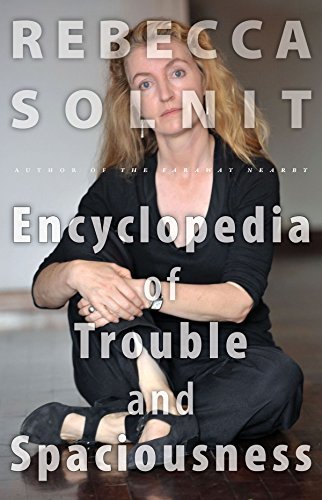What do you think?
Rate this book


Unknown Binding
First published August 12, 2014
“If you grab that stuff, are you a criminal? Should you end up lying in the dirt on your stomach with a cop tying your hands behind your back? Should you end up labeled a looter in the international media? Should you be shot down in the street?”Climate Change is Violence
Climate change is global-scale violence against places and species, as well as human beings. Once we call it by name, we can start having a real conversation about our priorities and values. Because the revolt against brutality begins with a revolt against the language that hides that brutality.Inside Out, or Interior Space
Maybe it’s important to make a distinction between what gets called material and what real materialism might be. By materialistic we usually mean one who engages in craving, hoarding, collecting, accumulating with an eye on stockpiling wealth or status. There might be another kind of materialism that is simply a deep pleasure in materials, in the gleam of water as well as silver, the sparkle of dew as well as diamonds, an enthusiasm for the peonies that will crumple in a week as well as the painting of peonies that will last. This passion for the tangible might not be so possessive, since the pleasure is so widely available; much of it is ephemeral, and some of it is cheap or free as clouds. Then too, the hoarding removes the objects — the Degas drawing, the diamond necklace — to the vault where they are suppressed from feeding anyone’s senses.The Butterfly and the Boiling Point, a reflection on the Arab Spring and the cause of revolutions in general.
That the flapping of a butterfly’s wings in Brazil can shape the weather in Texas is a summation of chaos theory that is now an oft-repeated cliché. But there are billions of butterflies on earth, all flapping their wings. Why does one gesture matter more than another? Why this Facebook post, this girl with a drum?
It's true what you heard about macrame. Partly some mutant version of a craft tradition and partly something for the fidgety hands and wandering minds of the drugged, macrame was also the means to create harnesses from which a million planters were hung from a million ceilings to create gratuitous clutter. You can think of macrame as some vernacular extension of 1960s soft sculptures by Bruce Conner, Eva Hesse, Robert Morris, and Claes Oldenburg, but its aesthetics had grown monstrously. There was something quintessentially 1970s about these pendulous burdens - obscuring views and dripping foliage - something that tied them to the fern bars of the era and to the overall aesthetics of horror vacui. This era of shag rugs and feather-bedecked roach-clip hair ties rivaled the Victorians when it came to clutter, ornament, jewelry, print, pattern, texture, flourish, tassels, fringes, tendrils, frizz, dangly bits, lace, laces, buttons, and other distractions for the eye. (32)